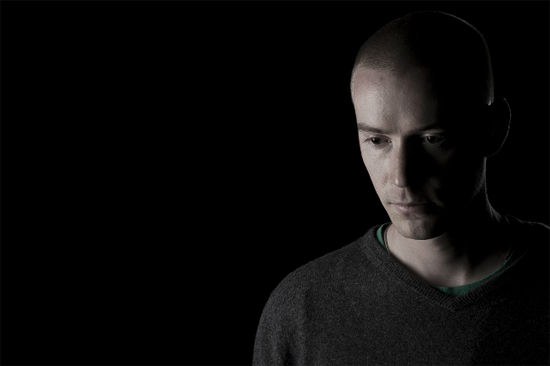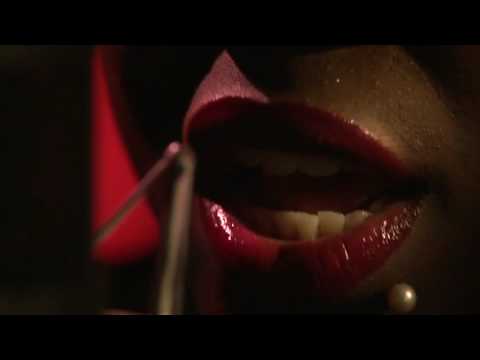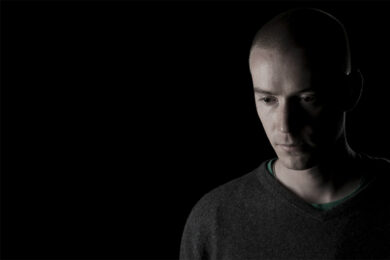Rob Ellis, aka Pinch, is one of the more uncompromising producers working within modern electronic music. Hypnotic, driving and nuanced, his music is both futurist and – in these days of rabid cross pollination – resolutely, and recognisably, dubstep.
Fervent advocate of vinyl, lover of British soundsystem culture and champion of headstrong, meditative bassweight, Ellis has quietly contributed a refined and lasting catalogue to the more rooted and elemental end of the hardcore continuum. Instrumental in bringing the nascent dubstep sound from London to Bristol (where it quickly found its natural second home) he has remained in the city, running not only his Tectonic label but also much loved club nights Subloaded and, until very recently, Dubloaded.
2007 saw him release one of the most fully realised dubstep LPs to date in the form of Underwater Dancehall, while the past couple of years have seen him tackle a number of equally ambitious projects. Scientist Launches Dubstep into Outer Space pitted legendary Jamaican dub controller Scientist against producers such as Mala and Kode9, while the Pinch & Shackleton collaboration LP – released sans fanfare by Honest Jon’s at the tail end of 2011 – delivered eight beguiling tracks of drawn-out, exotic hypnotics.
But while many of the original vanguard have distanced themselves from a scene that has, since it’s early years, changed almost beyond recognition, Pinch and the Tectonic label continue to fly the flag for progression within the 140 bpm tempo range, lending space to heady purist strains (Jack Sparrow, Jakes) and the occasional mellower import (Pursuit Grooves, Flying Lotus). Music concerned as much with personal acoustic space as the heaving punch of extreme sub pressure, subliminal manipulation is central to the Tectonic aesthetic, creating equally powerful results both in the dance and through headphones.
This month sees the release of Pinch’s first officially released mix, FabricLive.61. And in a 12 month period that has seen critically acclaimed mixes from some of ‘bass music’s (more on that term later) more esteemed proponents, his contribution is a refreshingly different proposition (read the Quietus review here). A simple, stripped down and, quite literally, cyclical affair, it eschews the lightning quick 30-plus track approach that has proliferated recently for a rolling headphones session that takes in everything from techno and funky through to pure dubstep. The Quietus spoke to him on the telephone, from his kitchen in Bristol, about the mix, his history and current projects.
For those who are unfamiliar with your work and Tectonic, how did you find your way to dubstep?
Rob Ellis: Well, there was no dubstep scene in Bristol whatsoever when I first came across the music. I went to FWD>> [founding dubstep night] in London in 2003 and saw Kode9 play, and was blown away by what I heard. It was strange – immersive, very, very loud, completely at odds as to what the popular conception of dance music was. It was a meditative experience – there was a lot of smoke there as well, of course… Everyone was really into the music but not moving much, not dancing as such but very obviously in the zone. It was something different, quite far removed from everything else that was going on in electronic music at that time.
Soon after that I set up my first night, Context, in Bristol, which would have been in January 2004, and that was kind of a taster in the city for what was then an emergent sound. There weren’t actually a huge number of ‘dubstep’ records, as such, to play at that point, certainly not enough to form an entire night around. We’d start on dub and end on jungle, with the early dubstep stuff in the middle.
Subloaded started soon after and from the off that was a much bigger kind of vibe – the focus has always been dubstep in room 1. It just grew from there really. People in Bristol really picked up on it quickly, which is not surprising, given [the city’s] musical history.
It’s interesting to hear about your first night, different genres programmed together. Loads of clubs do that now – back then things tended to be much more compartmentalised.
RE: You have to remember we’re now 25-30 years down the line into electronic music, we have that whole history and lineage to draw on. Right now, dance music is at the least polarised, least tribalised period that it has ever been. Music is more easily obtainable than before, people are constantly looking for something new.
Within house music, within techno music, within dubtep music, the boundaries have already been set – there has been a set way of doing things for quite a while. Many, many years in some cases. It’s experimentation within those frameworks that has led to a more open vibe. There’s a lot of music out there that borrows from a lot, yet doesn’t quite fit with any one particular genre – and there’s no real name for it at the moment, which is cool.
What’s your take on the catch all of ‘bass music’? I’ve noticed tunes termed under this banner that are essentially generic house records.
RE: I despise the term ‘bass music’ – I really hate it. It’s meaningless, it’s as if it’s been coined to sell shit compilations. It’s quite a cynical thing. I mean, how is it possible, under that umbrella, to put some massive Sub Focus big room monster d’n’b tune, and then some little Roska rolling thing? It doesn’t make any sense. The two things are very, very different and bear no relation to each other at all. It’s just this idea that you can catch all of this music under the same umbrella and a lot of the music really doesn’t relate. It’s one of those terms that are fairly meaningless.
What about dubstep? I interviewed Pearson Sound last year, and he was talking about how it’s become a dirty word for some people.
RE: There needs to be a clear distinction between then and now. Things have changed massively – you can’t ignore that. Dubstep as a term, to my mind, describes the early sound – meditative, cinematic, very deep music that was peppered with that early Coki style, the more aggressive stuff. But a lot of the newer music that is termed ‘dubstep’ is focused simply on the release of energy – nothing much else. Adrenaline, that cycle of ‘release, release!’ That’s not to say that there’s not a place for that – there has always been a certain aggression in the music. It’s when one style begins to proliferate that you get a problem.
Basically, one way of looking at it is to think about it in jungle/drum ‘n’ bass terms. Dubstep, as it was, is your proper early jungle: lo fi production values, experimental, free kind of vibe. Dubstep – where it is now – is like d’n’b at the turn of the millennium. First you had your Bad Company style, everyone jumped on that, then everything went very dancefloor and sets became really similar – a large part of the scene focussed on that Twisted Individual sound, wobbly basslines. Dubstep was the jungle, what we have now is the drum ‘n’ bass.
You know, I was at the cutting house the other day cutting some old Mala plates. It still sounds so much fresher than a lot of the music being made today. Did you here the Pearson Sound Essential Mix the other week? He was dropping the old Mala tunes and they still sound fucking amazing!
But what about Tectonic? I see Tectonic as carrying that early lineage forward. Is that fair – do you still see it as primarily a dubstep label?
RE: Yes, I do. It’s a label that is completely rooted in dubstep. Taking risks with sound, searching for interesting rhythms. Obviously we branch out, we release music at different speeds and all sorts, but yeah, it is still a dubstep label and it is still rooted in experimenting with the sound, leaving things as open as possible.
Your LP with Shackleton last year was an LP that showed the continued creative potential of the 140 bpm tempo range. It didn’t really sound like much else out there. How did the writing process work?
RE: Well, it was me and Sam [Shackleton] sitting in front of a computer, in a room [laughs].
Seriously though, much of it was done in Berlin where Sam is based, a little bit over here in Bristol. A lot of synth work. There’s nice analogue warmth to it. We use this thing called the Culture Vulture a fair bit – it’s a pre amp with a lovely tone, really warms things up. A lot of it is synth-led, rather than sample-based, just us seeing what works, I guess. We did a few early bits that didn’t make it, but we were both happy with the final LP.
There’s a strong hypnotic undercurrent to that LP. Your Fabric mix begins and ends on the exact same track, the Distal tune, creating a cyclical effect.
RE: Yeah, it starts and ends on the same tune. It’s funny, it seemed like quite an obvious thing to do in some ways, but I looked into it and it seems that nobody has done it, so there we go. I like to think of people putting it on for like, 10 hours on iTunes or something, so that it becomes some kind of mantra [laughs] – the idea of it existing completely in its own right, outside of a structured beginning or end.
What about the medium? You’ve been outspoken in your support of vinyl. Was the final mix done on vinyl?
RE: I use vinyl exclusively. When Fabric asked me to do it a tiny part of me did think, you know, should I go down the Ableton route, get things absolutely note perfect and all clean and polished? But that really wouldn’t have been an honest reflection of who I am as a DJ. I’ve focused on playing vinyl and dubplates throughout my career, so the whole mix that you hear is vinyl and dubplates.
The thing about dubplates, though, is that the first time that you play a dub it sounds better than vinyl – better than anything – because a vinyl is made from an acetate master. The problem is that they deteriorate pretty fast, so you want to get them in the early stages to have them sounding at their best.
What that meant for the mix was that I needed to be sure that I hadn’t played them too many times. I really couldn’t be practising the whole thing or whatever, so the mix that you hear is done in one take, and it’s by no means 100% planned. I essentially licensed all of the tunes that I may have wanted to use in the mix, cut them to dub and then piled them up in my room and did it in one take. It might not be the most technically perfect way of doing things, but I felt it was the best reflection of what I do.
That’s interesting – I always had the vision of DJs feverishly slaving over tracklists and individual mixes for months on end for a Fabric mix!
RE: I don’t want to sound blasé about the process – I took it really seriously. It’s a big, big thing to be asked to do a Fabric mix, it’s a real honour, you know?
But once I had an idea of the tracklist and had sorted the licensing out, it was a case of actually finishing up a lot of my own productions for the mix – so in that respect it took a fair amount of time because Fabric getting in touch was the impetus I needed to finish a lot of music. About a third of the tracks on the mix were done with the Fabric session in mind, so it was a challenge to get them all done in time.
There’s quite an eclectic selection there – that may surprise some people, the Equalised track especially, proper techno, also some funky? Some may have you down as something of a ‘purist’.
RE: Ironically enough I think a year or so ago I was talking about how I didn’t want to end up as a dubstep DJ playing token house records [laughs]. Oh well!
Seriously though, you need to keep your own interests alive and well. There are techno tracks in there, there are house tracks in there, but it all sets it up nicely for when the dubstep does come in, and there is still a load of proper dubstep in there. There are actually two places where the mix could start: the tune that it actually does start on, the Distal track [‘Venom’], or the Roly Porter tune [‘Hessra’] which is more of an industrial thing. So in that respect there’s an interesting dynamic, I think.
Finally, what are you looking forward to for Tectonic this coming year?
RE: Distal! He’s fucking amazing and I’m really, really excited about his music. We have an album coming from him this year. He comes from the US and just has the most individual sound. He experiments a lot with different sounds, but everything he does sounds very much his own. I’m really pleased with how the tracks are sounding – everything he sends over is great.




